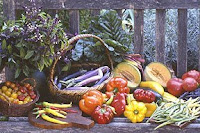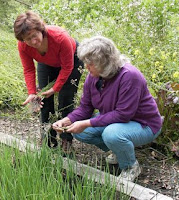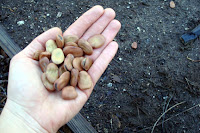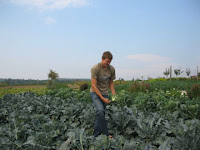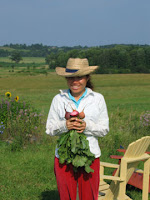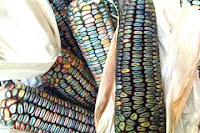Here are three really useful, practical and functional tools that I truly appreciate and use with pleasure and satisfaction throughout the gardening season. I think all three make wonderful holiday gifts, so I wanted to share why I really like them and tell you where to get them as well. I really don't have any association with these companies, these are just my personal faves!
S unday Afternoons Hat's "Sport hat" model
unday Afternoons Hat's "Sport hat" model
Great for comfort, looks, convenience and sun protection. I have always had a hard time finding a good garden hat because I find most hats to be uncomfortable and annoying. Several years ago, I discovered this one and everything changed. I actually own 3 of these hats so that I can have one stashed in the house, in the garden shed and in my car. The hat is so lightweight (2.2 ounces) that you forget you have it on. The design features a full crescent 4 inch sun protection brim that extends around the sides of the head, tapers over the ears, and includes an extension you can tuck up or wear down to cover your neck and it even accommodates a ponytail. I think it's still pretty good-looking even with all of this protection. The mesh air vents keep my head from getting too hot and the hat is adjustable for all head sizes and easily washed in the machine. I buy them right from the company's website, while not cheap at $34, they are often available for $19 on their sale page, although in more limited colors. Look for these hats at: http://www.sundayafternoons.com/
Joyce Chen "Never Dull" Scissors
 My favorite go everywhere scissors for kitchen and garden.I carry these little handy all-purpose scissors when I go out in the garden. At 6 1/4 inches, they are especially well sized to work for a woman's hand and great for everything: trimming dead leaves, cutting bouquets, snipping lettuce and herbs and as a main workhorse tool for cutting bouquets and harvesting vegetables. The bright red scissor handles are made from soft vinyl, making them freely comfortable for heavy use. The well-balanced high carbon steel blades give excellent leverage and easily cut even woody stems. They "never dull" as their blades are electronically hardened and don't require sharpening over a lifetime of use. They fit easily in my jeans pocket and I think they're essential for every working gardener. I also keep another pair in the house to use for kitchen chores -- these well-made small scissors are truly multipurpose. Usually available for about $21-$25 from many websites -- just google Joyce Chen scissors and take your choice.
My favorite go everywhere scissors for kitchen and garden.I carry these little handy all-purpose scissors when I go out in the garden. At 6 1/4 inches, they are especially well sized to work for a woman's hand and great for everything: trimming dead leaves, cutting bouquets, snipping lettuce and herbs and as a main workhorse tool for cutting bouquets and harvesting vegetables. The bright red scissor handles are made from soft vinyl, making them freely comfortable for heavy use. The well-balanced high carbon steel blades give excellent leverage and easily cut even woody stems. They "never dull" as their blades are electronically hardened and don't require sharpening over a lifetime of use. They fit easily in my jeans pocket and I think they're essential for every working gardener. I also keep another pair in the house to use for kitchen chores -- these well-made small scissors are truly multipurpose. Usually available for about $21-$25 from many websites -- just google Joyce Chen scissors and take your choice.
Bloomsaver Flower Harvest Caddy
Every Flower Gardener Should Have One
 The idea for the Bloomsaver began in the garden when two good gardening friends decided to design a tool making it easier to collect flowers for bouquets. The Bloomsaver Flower Caddy they came up with is a lightweight, three section container with a detachable handle. It allows you to harvest and collect large quantities of blooming flowers without wilting, crushing or bruising them and carry them around the garden as you harvest. With three different sections, you can sort your flowers by size color or type as you harvest them if you like. The base unit is molded of high-quality plastic and the detachable Lexan handle is shatterproof. I find the Bloomsaver easy to carry and very stable.
The idea for the Bloomsaver began in the garden when two good gardening friends decided to design a tool making it easier to collect flowers for bouquets. The Bloomsaver Flower Caddy they came up with is a lightweight, three section container with a detachable handle. It allows you to harvest and collect large quantities of blooming flowers without wilting, crushing or bruising them and carry them around the garden as you harvest. With three different sections, you can sort your flowers by size color or type as you harvest them if you like. The base unit is molded of high-quality plastic and the detachable Lexan handle is shatterproof. I find the Bloomsaver easy to carry and very stable.
I found out about the Bloomsaver from one of my rose loving friends and now I wouldn't be without it. For flowers like sweet peas or zinnias are roses which can crush and bruise easily if you pack them together tightly, it really is a wonderful solution. Sometimes I just fill it up with flowers and don't even bother to transfer them to individual vases because it looks quite lovely as a casual arrangement. The Bloomsaver sells for about $28.95, but it's worth it and I've had mine for years. Still made by its original developers, it is only available on their small company website: http://www.bloomsaver.com/
S
 unday Afternoons Hat's "Sport hat" model
unday Afternoons Hat's "Sport hat" modelGreat for comfort, looks, convenience and sun protection. I have always had a hard time finding a good garden hat because I find most hats to be uncomfortable and annoying. Several years ago, I discovered this one and everything changed. I actually own 3 of these hats so that I can have one stashed in the house, in the garden shed and in my car. The hat is so lightweight (2.2 ounces) that you forget you have it on. The design features a full crescent 4 inch sun protection brim that extends around the sides of the head, tapers over the ears, and includes an extension you can tuck up or wear down to cover your neck and it even accommodates a ponytail. I think it's still pretty good-looking even with all of this protection. The mesh air vents keep my head from getting too hot and the hat is adjustable for all head sizes and easily washed in the machine. I buy them right from the company's website, while not cheap at $34, they are often available for $19 on their sale page, although in more limited colors. Look for these hats at: http://www.sundayafternoons.com/
Joyce Chen "Never Dull" Scissors
 My favorite go everywhere scissors for kitchen and garden.I carry these little handy all-purpose scissors when I go out in the garden. At 6 1/4 inches, they are especially well sized to work for a woman's hand and great for everything: trimming dead leaves, cutting bouquets, snipping lettuce and herbs and as a main workhorse tool for cutting bouquets and harvesting vegetables. The bright red scissor handles are made from soft vinyl, making them freely comfortable for heavy use. The well-balanced high carbon steel blades give excellent leverage and easily cut even woody stems. They "never dull" as their blades are electronically hardened and don't require sharpening over a lifetime of use. They fit easily in my jeans pocket and I think they're essential for every working gardener. I also keep another pair in the house to use for kitchen chores -- these well-made small scissors are truly multipurpose. Usually available for about $21-$25 from many websites -- just google Joyce Chen scissors and take your choice.
My favorite go everywhere scissors for kitchen and garden.I carry these little handy all-purpose scissors when I go out in the garden. At 6 1/4 inches, they are especially well sized to work for a woman's hand and great for everything: trimming dead leaves, cutting bouquets, snipping lettuce and herbs and as a main workhorse tool for cutting bouquets and harvesting vegetables. The bright red scissor handles are made from soft vinyl, making them freely comfortable for heavy use. The well-balanced high carbon steel blades give excellent leverage and easily cut even woody stems. They "never dull" as their blades are electronically hardened and don't require sharpening over a lifetime of use. They fit easily in my jeans pocket and I think they're essential for every working gardener. I also keep another pair in the house to use for kitchen chores -- these well-made small scissors are truly multipurpose. Usually available for about $21-$25 from many websites -- just google Joyce Chen scissors and take your choice.Bloomsaver Flower Harvest Caddy
Every Flower Gardener Should Have One
 The idea for the Bloomsaver began in the garden when two good gardening friends decided to design a tool making it easier to collect flowers for bouquets. The Bloomsaver Flower Caddy they came up with is a lightweight, three section container with a detachable handle. It allows you to harvest and collect large quantities of blooming flowers without wilting, crushing or bruising them and carry them around the garden as you harvest. With three different sections, you can sort your flowers by size color or type as you harvest them if you like. The base unit is molded of high-quality plastic and the detachable Lexan handle is shatterproof. I find the Bloomsaver easy to carry and very stable.
The idea for the Bloomsaver began in the garden when two good gardening friends decided to design a tool making it easier to collect flowers for bouquets. The Bloomsaver Flower Caddy they came up with is a lightweight, three section container with a detachable handle. It allows you to harvest and collect large quantities of blooming flowers without wilting, crushing or bruising them and carry them around the garden as you harvest. With three different sections, you can sort your flowers by size color or type as you harvest them if you like. The base unit is molded of high-quality plastic and the detachable Lexan handle is shatterproof. I find the Bloomsaver easy to carry and very stable.I found out about the Bloomsaver from one of my rose loving friends and now I wouldn't be without it. For flowers like sweet peas or zinnias are roses which can crush and bruise easily if you pack them together tightly, it really is a wonderful solution. Sometimes I just fill it up with flowers and don't even bother to transfer them to individual vases because it looks quite lovely as a casual arrangement. The Bloomsaver sells for about $28.95, but it's worth it and I've had mine for years. Still made by its original developers, it is only available on their small company website: http://www.bloomsaver.com/


